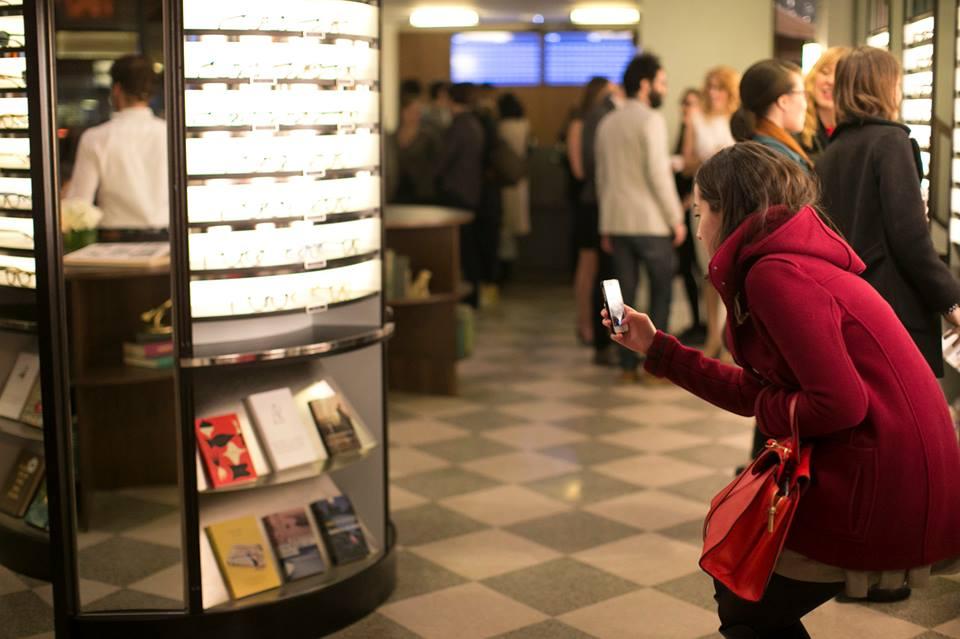This post is sponsored by ROAM, part of Ingenico Mobile Solutions and the provider of the only end-to-end mobile commerce platform on the market enabling businesses to quickly, easily and cost-effectively deliver secure, custom-branded mobile point of sale (mPOS) solutions to their employees and customers.
Less than a decade ago, e-commerce purists were declaring the demise of brick-and-mortar shopping. Physical stores were believed to be bad economic investment. The web was the wave of the future. It was online or bust.
But the reality is no matter how big your brand or cutting-edge your website, nothing can beat the in-store shopping experience. Even the most sophisticated technologies cannot replicate touching, feeling, and, most importantly, trying on actual merchandise. Nor can a high-tech interface ever replace good old-fashioned human-to-human interaction between a customer and a salesperson.
This personal, intimate shopping available only in a brick-and-mortar store is the most powerful, effective way to nurture brand trust, build loyalty, and close sales. Sure, people still want an online option, but not at the expense of the up-close-and-personal experience. It is a critical component of the brand-consumer relationship, and one that many online retailers were missing.
Until now.
More and more retailers are rejecting their web-only identities and setting up physical stores where they can sell to consumers face-to-face. While small e-tailers are opening temporary pop-up shops at music festivals, farmers markets, and other venues; big brand names like Bonobos and Warby Parker are establishing brick-and-mortar stores in fashion hotspots like Newbury Street.
But these e-tail-turned-retail stores are not your traditional shopping destinations. They reflect a new era of shopping, one defined by empowered consumers who are constantly connected to the web.
Contemporary retailers have realized that shoppers browsing merchandise in stores are likely “showrooming” anyway, so why not embrace it? The new retail model is the store as a showroom,The New York Times reported. They carry less inventory, staff fewer salespeople, and eliminate unnecessary infrastructure to cut costs while still accommodating the needs of the modern shopper.
At the core of this modern, streamlined, efficient retail model is a flexible mobile point-of-sale (mPOS) solution. For many brands, their stores are only physical extensions of their primary e-tail business. Quite often, especially for smaller companies, their shops are only temporary. As a result, it makes little sense to invest in a full payment infrastructure and fixed countertop terminals. Especially when mobile payment systems offer so many added benefits for enhancing consumers’ shopping experience.
Beyond the processing of payments, mPOS solutions can integrate with mobile apps to serve specific retailers’ functional needs such as inventory management or appointment scheduling. Mobile also empowers better customer service. Armed with tablets, sales people can search inventory, compare products, and place orders.
Related: 4 Steps to Make mCommerce Personal
Mobile also empowers the customer to take control. They can use tablets in-store to activate loyalty codes and unlock deals, search products, order and purchase merchandise all on their own. It’s the empowered online consumer in real life.
If stores deplete inventory, mobile can also help prevent any lost business by ordering products immediately in store.
“Tablets open up an opportunity for small retailers to expand their product offerings without having the physical merchandise on hand,” Giovanni DeMeo, vice president of global marketing and analytics at retail event marketing firm Interactions, said to Business News Daily.
Plus, with mPOS branding options like ROAM’s white label solutions, retailers’ offline image will seamlessly integrate with the strong brand they’ve already built online.
Mobile point-of-sale is the turnkey solution empowering e-tailers to deliver the total retail experience. It is the crucial piece of the puzzle completing the 360 degree, multi-channel shopping experience consumers now demand.
The new retail model is simple, speedy, streamlined, and social. Sleek, secure mobile payments solutions are, well…“in.”
How can mobile benefit your brand? Find out: Missing Link: Why Mobile is the Key to a Complete Omnichannel Strategy
Images via ROAM, Warby Parker

